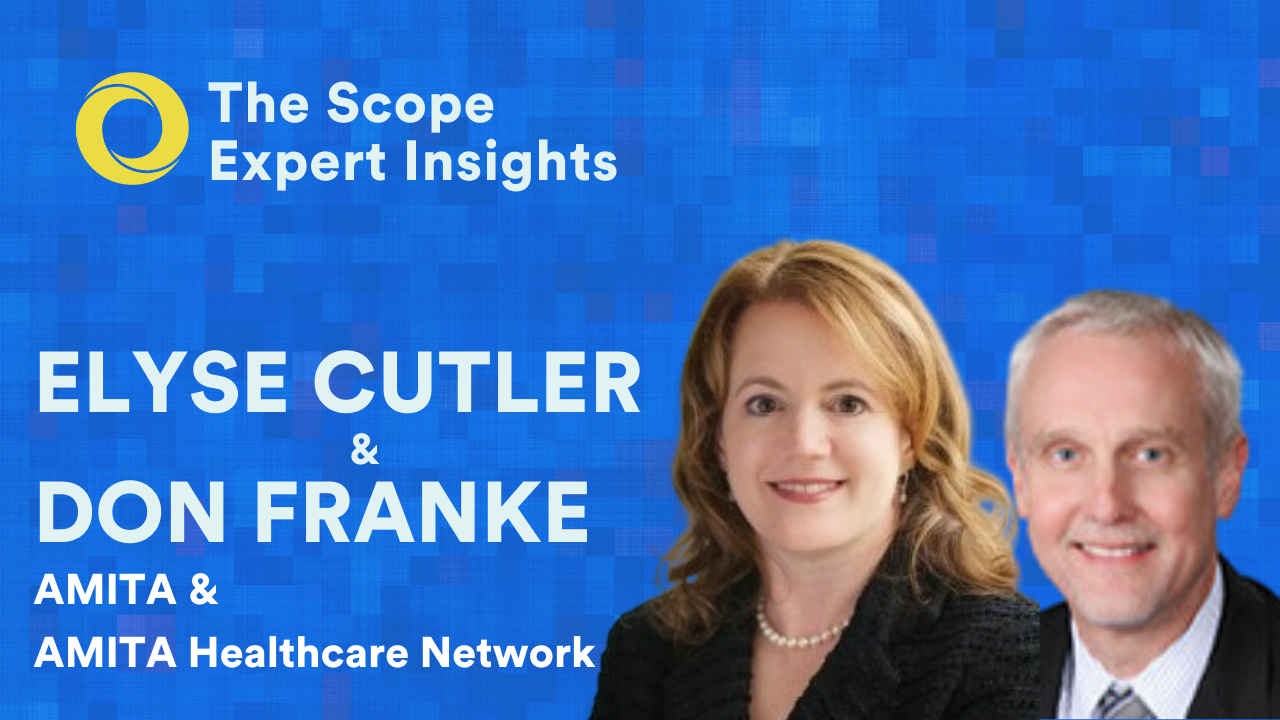AMITA on the the role of private equity in transforming healthcare
Elyse Cutler, Chief Strategy Officer, AMITA, and Don Franke, SVP for Population Health CEO, with AMITA Healthcare Network, give us insights into the role of private equity in transforming healthcare, the core aims of value-based care, and why change has been so slow to come.
What innovations in the last 1-3 years do you feel will permanently change the healthcare industry and why?
Cutler: While it’s not an innovation in the traditional sense, COVID as a novel virus will have the biggest and longest-range impact on our industry well into the future. For example, we now have widespread use of virtual visits across the industry, and we are seeing less inappropriate emergency-room use. At the same time, the disproportionate impact of COVID on low-income communities of color has brought attention to the inequities in the health care system. We all have a responsibility as health care leaders to address these inequities.
Who (organizations or people) are the most meaningful disruptors in healthcare today and why have others failed?
Cutler: The private-equity sector is having a significant impact on the health care system today. These funders are investing millions of dollars to “transform” health care. The jury is out on how these entities will impact the industry over the long-term.
What does value-based care mean to you? Can you provide us with some examples in action?
Franke: Value-based care is based in a foundation of provider accountability related to patient outcomes. Our focus in value-based arrangements is driven by the quadruple aim – reducing total cost of care provided, improving the quality and outcomes, improving patient experience/satisfaction in the care they receive, and enhancing the provider experience in working within the parameters of the program. Typically in a value-based arrangement with a payor AMITA:
- Receives a list of attributed patients for whom we are accountable
- We accept responsibility to drive cost to an acceptable medical loss ratio (premium ÷ claim expense)
- We agree to a set of quality metrics that are appropriately focused on the population for which we have accountability (i.e. colonoscopies for >50, childhood vaccines for <18, etc.)
- We agree to bi-directional data-sharing of quality, cost and outcome data (non PHI) amongst all providers participating in the arrangement and with the insurance company
- There is a significant focus on accurate coding of services and diagnosis to generate appropriate risk scores for patients in order to stratify the intensity of focus on specific patients and issues
- Medication adherence is a key focus
- There are opportunities to participate in sharing of any savings that are generated as a result of the rigor around managing the care for these patient populations
What are the biggest challenges and obstacles to making your vision of a value-based care future a reality?
Cutler: I started working on value-based care in 2010 and, unfortunately, not much has changed in the industry over that time. The financial incentives to provide high cost, high-intensity care still fundamentally exist across the industry.
Where do you like getting your industry news from? Which industry thought leaders do you listen to and why?
Cutler: The New York Times, the Wall Street Journal and Politico Pulse.
Recent Posts 
The Critical Partnership Between the Clinical and Business Teams
Healthcare GDP is 9% of US GDP, 4th overall, weighing in at $2.3T. It’s also the largest source of government spending, at 28% of the federal budget (nearly doubling the DoD budget for the largest military in the world). Balancing clinical and quality of care requirements while also dealing with shrinking reimbursements and major consolidation...
Ambulatory Management Solutions Rebrands to Ambulatory Anesthesia Care (AAC)
One of the lynchpins of safe, effective surgery is exceptional anesthesia. Obsessive dedication to quality and dogged pursuit of innovation by groups like Mobile Anesthesiologists in Chicago, Noble Anesthesia Partners in Texas, and M2 Anesthesia, a pediatric dental anesthesia group in the PNW, are all part of a larger ecosystem of success. That success has...
Anesthesiologists Are Essential to Patient Safety
With the growth of ambulatory surgery, there are increased efforts to meet demand. One approach has been changing requirements on physician-anesthesiologists in the OR, including two bills up for consideration in Illinois, both removing the requirements for direct anesthesiologist supervision of CRNAs or other providers when delivering anesthesia (1 and 2). While CRNAs are an...

